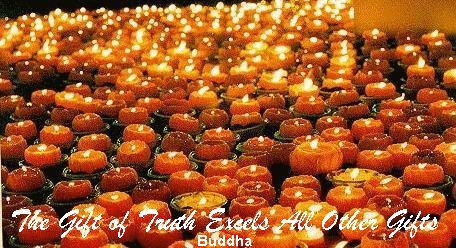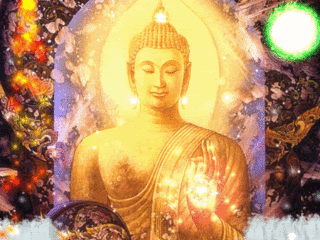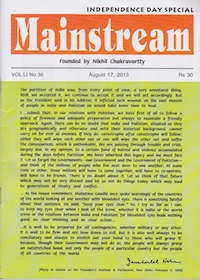the voyage of caste to the Western hemi-sphere, the first port of call
was Britain. The Hindus take pride that they did not conquer any nation
with sword. But they exported caste to sabotage England internally. The
cancer has gone deep and assumed so critical a dimension that Queen
Elizabeth assented to an amend-ment in the Enterprise and Regulatory
Reform Bill in April 2013 when the House of Commons bowed to reassure
from
the House of Lords to include caste as an aspect of race as part of the
Equality Act 2010.1 This is the first country outside India where caste
discrimination has been put on the statute book to contain, if not
crush, the exploding malignancy.
2011 census returned 816,633 Hindus, including 450,000 untouchables
referred as Dalits, in England and Wales while the figures for Scotland
are yet to be released. Dalits account for 55 per cent of the Hindus.
They face the same caste discrimination and atrocities their brethren
have to contend with in India. A realisation is yet to dawn on the
Hindus in their overseas homes that their conduct and behaviour,
practices and peculiarities are anathema to civilised society or
congenial human environment. “I shall be satisfied,” said Ambedkar, “if I
make the Hindus realise that they are the sick men of India and that
their sickness is causing danger to the health and happiness of other
Indians.”
The British Hindus have proved his apprehension infallible. The caste
malignancy is not confined within the four walls of India; it spilled
over as a “danger to the health and happiness” and infected others,
forcing the hands of the rulers to act for its suppression. Ambedkar
foresaw this: “As Hindus migrate to other regions of the earth, Indian
caste would become a world problem.” Caste has become a global nuisance,
threatening the delicate fabric of social peace, happiness and unity
wherever the plague visited.
had tall and talented protagonists, native and foreign. A nineteenth
century ICS officer, Sir George Birdwood, a member of the Indian higher
judicial cadre, who rose to be a judge of the Calcutta High Court,
wrote: “So long as the Hindus hold to the caste system, India will be
India; but from the day they break from it, there will be no more India.
That glorious peninsula will be degraded to the position of a bitter
‘East End’ of the Anglo-Saxon Empire.”2 By prostrating before caste
devotedly in obeisance the White man anointed himself to be an ‘avatar’
from the West. His pro-caste advocacy had laid the devout Hindus under
deep layers of gratitude.
is the pivot of Hinduism with graded inequality bearing the badge of
superiority and inferiority. M.K. Gandhi portrayed caste as the natural
order of society. He believed that caste was prevalent in other
countries also and taunted them saying: “Those countries have not
derived from the caste system the same degree of advantage which India
has derived” because India applied a “religious coating” to it.3 The
insensitive leader cited the blessings of caste:
Sudra, who only serves (the higher castes) as a matter of religious
duty and who will never own any property, who indeed has not even
ambition to own anything, is deserving of thousands obeisance. The very
Gods will shower
down flowers on him.4
religious coat over caste renders exploitation unobtrusive and painless
as if under sedation. Exploitation of a large masses yields high
economic bonanza and social prestige. A religious coating relieves the
exploiter of any taint or feeling of moral guilt. The elite Hindus,
therefore, instantly discovered the Machiavellian traits in Gandhi’s
advocacy. His subterfuge came to be hailed as philosophy. His pro-caste
thoughts, arguably, earned Gandhi the pedestal of the nation he
occupies. All castes found justification to exploit and suppress the
Sudras, including the untouchables, without any qualms of conscience.
The Hindu would suffer no moral guilt even if he violates any law
banning exploitation or slavery, till he subscribes to the Gandhian
tool, which, of course, reflects scriptural ordinance. It is a fraud to
claim that gods shower flowers on the Sudras for slavery of the upper
castes. This is fit to be dismissed
as hogwash with the contempt it merits.
is a living reality and posing a serious concern to the UK. The British
Hindus, of course, loudly deny its existence. The Dalits face
discrimination by and large from the upper castes. A British NGO, the
Anti-Caste Discrimi-nation Alliance (ACDA), undertook a study in
collaboration with Dr Roger Green, Director, Centre for Community
Research, University of Hertfordshire, Professor Stephen Whittle, OBE,
Professor of Equalities Law, University of Manchester, and advice from
Annapurna Waughray, Senior Lecturer in Law, Manchester Metropolitan
University. Its report, Hidden Apartheid—Voice of the Community: Caste
and Caste Discrimination in the UK, A Scoping Study, November 2009,
makes disturbing disclosures of caste discrimination.
British Government commissioned a survey and entrusted the task to the
National
Institute of Economic and Social Research (NIESR). Under the joint
authorship of Hilary Metcalf and Heather the Rolfe, its report, “Caste
Discrimination in Great Britain: Caste discrimi-nation and harassment in
Great Britain”, was released in December 2010.5 The Anti-Caste
Discrimination Alliance (ACDA), Dalit Solidarity Network UK (DSN),
CasteWatch UK, Voice of Dalit International (VoDI) and the Federation of
Ambedkarite and Buddhist Organisations (UK) (FABO) submitted their
memorandum on caste discrimination to the NIESR. The Hindu
representative organisations, for example, the Hindu Forum of Britain
(HFB) and Hindu Council UK, (HCUK), were consulted besides the British
Sikh Consultative Forum (BSCF) and the Network of Sikh Organisations on
the issue.6
Forum of Britain (HFB) is the largest umbrella body for British Hindus
with more than 350 member organisations from around the country. The
Hindu Council, UK (HCUK), on the other
hand, is the foremost and largest national network of the Hindu temple
bodies and cultural organisations, co-ordinating all different schools
of Hindu theology within the UK. A few of its primary objectives are:
(1) articulation of issues that concern Hindus at the local, state and
national levels in the United Kingdom; and (2) negotiation with the
government at all levels or other organisations/associations in matters
related to Hindu culture and religion. It also organises functions,
festivals etc. for promoting Hindu culture and religion.
survey reports explicitly present the anatomy of caste and behaviour of
the Hindus towards the low castes in dark colour. The NIESR identified
Birmingham, Coventry, Walsall, Willenhall (Staffs), Wolverhampton,
Southampton, Stroud, Slough, Bedford, Hitchin, Luton, New-castle,
Bradford, Derby, Leicester, Erith (Kent), Gravesend, Glasgow, London,
East London, Southall etc. for high concentrations of
Dalits. The surveys give an impression that any British Hindu meeting
another probes his caste status covertly, if not overtly, to establish
his identity. Caste-centric discussions, insinuations or innuendos and
behaviour in educational institutions, work or marketplaces, even health
centres are very common. Friendship, social intercourse, services are
determined on caste consideration. Hindu parents make it a point to warn
their wards to spurn the company of Dalits in schools. Employment,
promotion, work-shifts, place of postings, marriage between young boys
and girls of different castes are under the shadow of caste.
Intimidation, bullying, harassment, slander, prevarication, lobbying
against dalit interest are normal. A few instances culled randomly from
reports under consideration or media are cited below.
former Mayor of Coventry, Ram Prakash Lakha, OBE and Labour Councillor
for 23 years now, had migrated from Punjab to
the UK. An Indian daily says, Lakha himself battled caste prejudices
when he was first elected a councilor from an area with a sizable South
Asian population in 1989. “When the local Brahmin leaders got to know
that I am from a Dalit community,” said Lakha, “they started lobbying
against my candidature. The only option for me was to contest the next
election from the predominantly White neighbouring constituency.”7 The
Indian community did not even give him a formal reception which all his
predecessors and successors received. Caste alone can give any Hindu
such right to brazenly dehumanise lower social orders.
Lal Bali, a retired employee of the UK’s Royal Mail, who lives in the
suburbs of London, did not forget the harassment he faced at the Post
Office when he was temporarily promoted to the post of supervisor. “I
got to know that some of the people under me, who were Indians of a
higher caste, complained to the
management about my promotion. They said that they were not used to
taking orders from people of my caste,” he says.8 Such behaviour is
common in India.
experience. A Deputy Development Commissioner reported his District
Magistrate to the Divisional Commissioner alleging wasteful expenditure
on account of security arrangements for the visiting Bihar Chief
Minister in his district. The Divisional Commissioner post-haste
recommended for action to the Chief Secretary. All three belonged to the
same caste. In another, a District Magistrate complained to the Chief
Secretary against his Divisional Commissioner in a case of land use. The
DM and CS were of the same caste. The subordinate officers went over
the heads of their immediate controlling officers, both Dalit IAS. Their
misconduct strangely did not invite the predictable admonition from the
government. In both cases I, as the Divisional
Commissioner, was asked to report to the government.
ACDA surveyors were told: “We have four temples here because of Caste.
They used to call us ‘Chamar’ and say they did not wish to eat rotis
[Indian flat bread] at the temple because Chamar ladies had cooked
them.”9 Another focus group from Coventry also cited caste as
responsible for the establishment of a number of Gurdwaras:
“………..the number of gurdwaras we have by different communities
basically says caste discrimination exists. That is a very interesting
point because we got nine Sikh Temples here in Coventry.”10
NIESR found that X had applied for a job in the company (in which he
later worked) and helped a Jatt to complete the application form because
he could not write English. The Jatt got the job and X did not. X
considered he was much better than the other appointee, with better
qualifications (he has a post-graduate management
qualification.) However, those making the appointment were Jatt Sikhs
and X is a Chamar and Ravidassia. [NIESR, Caste Discrimination Report,
Case study 8, p. 37]
All Bengal Namasudra Association and Bengal Depressed Classes
Association submitted in oral evidence before the Simon Commission in
1928 at Calcutta that a Kayasth undergraduate got an appointment for a
clerk’s job over a Namasudra postgraduate at the Dacca Collectorate
because the former’s brother-in-law was a Head clerk there.
Khatri was in love with a different caste girl. They decided to get
married……The girl’s the parents said, ‘If you marry this boy we are
going to kill ourselves.’ I’ve so [seen] this happen to others.”11
Dharampuri, Tamil Nadu, a Dalit married a Vanniyar girl. In protest her
father committed suicide. In retaliation, 250 Dalit houses were burnt
down. About eight months later the Dalit youth’s
dead body was found near a railway track.12
is Hindu and low caste. He worked for a temporary agency and was placed
at Company Z, noted the NIESR. The senior management at the company
were White, but the majority of relevant line managers/supervisors for X
were Punjabi Jatts. When a permanent job came up, he applied for it,
was interviewed (by a Punjabi Jatt and a White British man who was
friendly with the Jatt supervisors) and was rejected. This happened
seven or eight times and it was only when the Managing Director (a white
British man) became involved that he was appointed. Perception of
merit, efficiency, competence, etc. vary if a Hindu is the boss of a
Dalit.
1999, X, a Ravidassia, bought a private hire company, employing around
50 drivers. He heard many comments from drivers about caste, referring
to low-caste Indians in derogatory terms. In 2001, he was involved in a
discussion about caste in
the office which led to him objecting to the views of his employees and
telling them he was from a low caste. Following this, five employees
from the Jatt caste left the company, saying they did not want to work
for an untouchable.
United Kingdom has become a caste colony. The illustrations vouch for
the dimension of caste hatred that has poisoned British social relations
and environment. The prestigious London School of Economics is not out
of the supremacists’ reach. Upper-caste students have vandalised Dr B.R.
Ambedkar’s statue there.
respondent told the ACDA: “My daughter graduated with a degree and was
working in a radio station as a secretary. ….No one can even imagine she
belongs to the untouchable class. After two years, her boss started to
smell something—she is not in high Caste. He started investigating
behind the scenes. ………He never rested until he found out she was
from the Chamar
community.” She confronted the boss for his nauseating conduct and left
the job to join an airlines. The Chamars alone account for 175,000 in
UK.
worked in a factory. The Jatt women told the managers that the Chamar
women used to do the menial jobs—cleaning etc. in India. They asked the
managers not to give them work next to Chamar women but to give them
jobs like they used to do in India. The managers put a few Chamar women
on cleaning jobs. They protested against it and told the management it
was wrong. “We said that we have a mind too and can also think for
ourselves—what is going on here? This was a factory in Birmingham.”13
Englishman married a Jatt girl and picked up caste hatred from her. He
thereafter started hurling derogatory remarks against Chamars and
Churhas. Instance also suggests Hindu health workers, after discovering
the low-caste status of the patients, refused to attend them,
while others had no problem to do the same job!
effects of discrimination on its victims, according to the NIESR, are:
reduced career prospects; lower earnings; detrimental effects on
education; social isolation; reduced access to social provision;
depression; loss of self-esteem; loss of confidence; and anger. The
consequences also include public violence. A Dalit reacted as saying:
“It makes us feel like a piece of dirt. They treat us like a piece of
dirt, like from a different planet.” This is the social cost of
discrimination. As may as 4.5 lakh strong British Dalits are under
psychological trauma. The garbage from home, cherished as cultural
values by the Hindus and dumped in the UK, has been polluting the social
environment the way it does unfettered in India. Nonetheless a
pro-caste Hindu believes: “Caste is no longer (in the UK) relevant and
it follows that caste discrimination in either services or employment is
something of
a red herring. [ ……….] Those who campaign for a caste
discrimination law are therefore using the issue as a smokescreen in an
attempt to promote themselves and their real cause—which is to convert
people to their faith.” In a diversionary tactic they allege conversion
and resort to a bundle of lies in the face of hard evidence.
did not invade the UK suddenly nor stealthily. The innocuous invasion
was over-looked, if not courted or tolerated. Had the British
authorities crushed the fangs of caste at its earliest or slightest
manifestation with an iron hand, the cancer would have ended there and
then. As the colonial rulers of India, the British were thoroughly
equipped with the knowledge of the monstrous ramifications of caste.
They naively believed that a liberal environment, complete freedom of
choices, unrestrained social intercourse and, above all, modern
education would detoxify migrant Hindus of the caste virus. It was a
grave blunder that they reposed faith on the Hindus over caste.
Dalits in the UK have been campaigning against caste discrimination for
the last three decades though the abuses, indignity and humiliation
started even earlier. Members of Parliament, domestic and international
human rights activists, secularists and academicians persistently
lobbied the government to outlaw caste discrimination. Under pressure
from the caste Hindus and their benevolent protectors, the authorities
feigned that sufficient evidences for caste abuses or discrimination
were wanting.
analysts and Hindu-watchers, however, have not failed to note the real
reasons for the government’s lackadaisical approach to caste
discrimination. “As the parliamentary debate showed, human rights will
not generally take precedence over class interests for the defenders of
capitalism. The
Conservative-Democrat government will vigorously defend their allies,
the Hindu elite and their businesses, including the profit-making
temples and faith schools.”14
responsible for the effervescence of the caste virus there. Such
perception about the government, however, does not augur well. The
authorities, federal and provincial in India, have shown lamentable lack
of commitment in the face of acute pressure exerted by Hindu lobbies of
the elite, intellectual classes, academicians, businesses tycoons and
industrialists even to enforce many laws designed to safeguard and
benefit the vulnerable sections subjected to gory victimisation. In
Britain, they did not succeed because “the treatment of untouchables is
one of the great unmentionables of British politics. They are certainly
the victims of a form of religious prejudice—the sanction for the
oppression of lower castes in a preordained hierarchy comes from
Hindu creation myths.15
“There is clear evidence from the survey and the focus groups that the
caste system has been imported into the UK with the Asian Diaspora and
that the associated discrimination affects citizens in ways beyond
personal choices and social interaction.” ‘Asian diaspora’ in respect of
caste actually refers to Indian Hindus. During the parliamentary debate
Ministers, led by the Equalities Minister, Jo Swinson, nonetheless
continued to chant there was insufficient evidence of the extent of
caste discrimination. After ‘outrageously’ dithering over two years, the
government finally outlawed caste discrimination.
Hindus are unhappy with the government for outlawing caste-based
discrimination in the UK. Their mood and reaction have been articulated
by the Hindu Human Rights, UK. “The whole caste
debate has needed mindless sheep……….Scratch the surface of any
anti-caste group and you will find hardcore Christian involvement even
while it is denied.”16 An article, captioned ‘Caste Game: Battleground
India’, went ballistic: “Caste discrimination has now been included as a
provision within the Equality Act. At the outset there may seem nothing
objectionable in this. But scratch the surface and a sinister agenda
emerges. The prime movers behind the new laws are not actually those
suffering from caste discrimi-nation but in fact a powerful well-funded
apparatus which sees Hinduism as something that needs to be wiped out.
Why is it that Right-wing Christian fundamentalists have taken such an
interest in the issue of caste?”17
the motto of the Hindu Human Rights, (HHR) UK. All those advocating
against caste discrimination from any forum in the UK are branded as
Christian fundamentalists. The British
Hindus have not hesitated to air their orthodox and anachronistic mind.
They aimed to instigate their lobbies in India and elsewhere by
alleging that Hinduism is in peril. Their actual objective is to create
an impression that Hinduism is facing threats of elimination from the
Christians! Their defenders, though also Christians, have defeated every
move since 1977 to ameliorate the fate of the British Dalits. In course
of the debates in the House of Commons on April 16, 2013, the UK
Equalities Minister Jo Swinson stated: “A range of groups has expressed
significant concerns about legislation on this issue, including many
Sikh and Hindu groups, some of which represent low castes, such as
Gujarati Arya Kshatriya Mahasabha UK, the Sikh Council UK, the National
Council of Hindu Temples UK, the Rita Trust, the Hindu Forum of Britain,
Vishwa Hindu Parishad UK, the National Hindu Students Forum UK and
Hindu Swayamsevak Sangh UK. All those organisations have
expressed their concern about legislating, and we need to listen to
their voices.” In orthodoxy the Hindus abroad are at par, if not ahead,
of their brothers at home in every respect. The objectives of some of
these organisation are known to Indians.
Minister, Jo Swinson, was opposed to bring any anti-caste
discriminatory law on the statute book. Hinduism is perhaps the only
religion that grants licence to upper castes for outraging, oppressing,
humiliating, harassing, bullying, exploiting even killing the
untouchables with least apprehension of punishment. It is simple that
these Hindu organisations want an India in the British isle with Dalits
under their boots. They expect the British administration to be
insensitive, judiciary out of bounds, police unfriendly and ruthless
against Dalit victims. No right-thinking man can be proud of the
treatment Dalits receive from any organs of the Indian administration
because of impervious Hindu
domination and influence.
replicate their vices and intervention from any corner is attacked with
allegations of conversion to Christianity. The protagonists of caste
forget that in every age and every country the world over the victims of
violence, injustice, persecution, inhumanity, torture, or exploitation
get unreserved and unrequited support and sympathy from liberal
humanists and right-thinking people. The Hindu does not believe in it.
His sympathy or humanism is circumscribed by the vision of caste. Caste
has robbed the Hindu of his fine and sublime human qualities, if any.
view is reinforced by the HHR. It pointedly targeted the Dalits in
their fight against injustice: “The anti-caste legislation is the result
of persistent lobbying by organisations such as Castewatch, Dalit
Solidarity Network (DSN), Voice of Dalit International, ACDA (Alliance
Against Caste Discrimination) and Dalit Freedom
Network (DFN). On the surface such organisations follow the politically
correct line that the problem is not Hinduism but caste and indeed that
caste discrimination happens in many communities, not just Hindus. But
the mask does not stay on for very long. While admitting that caste
discrimination is a problem for many Asian communities, it is
nevertheless said to have spread from Hinduism. Hence Hindus are the
real target. No Hindus, no caste. Simple.”18
objective now is to create a global alarm or scare in Hindu minds. This
is a clever ploy to incite, instigate and involve them in a fight for
perpetuating discrimination they pursue and practice in UK though they
are highly critical of the British MPs, academicians and rights
activists who have championed the causes of the Dalits there. The HHR’s
aim is to urge the Hindus to collaborate with their anti-Dalit and
pro-caste discrimination campaign for frustrating the law of
discrimination.
organisations too indulged in discrimination. According to the Hindu
Council’s news release, “Hundreds of devotees, representatives of
interfaith institutions and prominent members of the community gathered
in vigil to pay tribute to Jyoti Singh Pandey, 23-year old medical
student, who was gangraped and brutally assaulted on a moving bus in
Delhi on 16th December 2012. She later died of her injuries at a
hospital in Singapore on 29th December.”19
gesture that the British Hindus mourned the death of a rape victim in
Delhi. It is simultaneously sad to note their blindness did not permit
them to see beyond caste lines Their sentiment did not urge them to to
mourn the deaths of hundreds of tribal and Dalit victims of rape in
India. Why do they fail to treat them on equal footing and accord
similar condolences given to Jyoti Singh Pandey?
Council, Hindu temples, Hindu Human
Rights, Hindu Federation of Britain breath caste and pulsate caste. So,
the Hindu mourners are not known to extend the same courtesies to all
rape victims, irrespective of caste, creed, or place of birth, etc. The
British Hindus are selective and discriminatory. If Jyoti Singh Pandey
alone caught the Hindu attention, humanity is put to shame because of
the narrow outlook, caste-centric attitude and yardstick of the
community! They seem to have taken a leaf out of the outlandish
behaviour of demonstrators on the streets of India, following the
incident hyped by the media. Does it edify them with glory? The two
groups—haters and hated, discriminators and discriminated—are not only
divided but also have positioned themselves strategically in warring
camps. The upper castes are oblivious that Dalits have long endured
harassment, humiliation, bullying and taunts in their lives. Their
practices and conduct vis-a-vis the Dalits in the Western hemisphere
are now destined to be stamped out, if and only if the British
bureaucracy laboriously implements the amended Equality Act 2010 in
letter and spirit with honesty and uprightness.
Hindus scorned the voices of sanity. Lord Inderjit Singh stated in the
House of Lords that Hinduism had to get rid of caste just like his own
faith did. The HHR attacked him, saying: “A cursory look at instances of
caste discrimi-nation indicate that it is actually worse among Sikhs.
Those from castes variously called Chamar, Chuhra and Ravidassia
constantly complain of harassment, bullying and discrimi-nation by
Jatts. The examples are in fact not just disturbing but too common to
merely dismiss out of hand. But we need to ask ourselves just what does
this have to do with Brahmans, Vedas and Manusmirti?”20
with an inkling of the origin of caste is aware of the architects and
craftsmen of
caste hatred and discrimination. Brahmans, Vedas and Manusmriti
unstintingly hog their focus. The HHR deceptively threw the entire
burden of blame for caste discrimination on the British Jatts. In
Haryana and Punjab Jatts indeed are perpetrators of crimes against
Dalits. It is a different matter that the government cannot punish the
perpetrators of crimes. They carried their hatred and prejudice to
overseas destinations. This does not mean that other Hindus are bereft
of hatred for Dalits. None stood by the victims of discrimination ever.
2008, Raj Pandit Sharma’s labour of love produced a dissertation on the
caste system, which created laudatory ripples in far-off India.21 The
researcher says: “It was the British who single-handed formulated the
caste schedules that remain in place today…… The evils manifest in the
current form of the caste system cannot be ascribed to the Hindu faith.
The current adulteration of the Hindu
varnashram system is a direct result of generations of British colonial
bureaucracy.”22 The scholar is prevaricating. His observation is
anachronistic, a result of his misjudgment, parading his deplorable lack
of knowledge of history. His understanding of the Brahmans, Vedas and
Geeta and all other scriptures and epics that propagate as also uphold
caste or Varna vyvastha is utterly poor. Sharma’s streak of mind comes
out unguarded when he declares: “Historically, Varnashram has enabled
Hindu civilisation to survive repeated invasions. It has made the Indian
society stronger. It has served a purpose, performed certain functions,
and met appropriate needs at appropriate times in history.”23
readers will have little doubt about where his loyalties lie and his
hostility is directed. With an attitudinal make-up as this, Hindus do
not believe Dalits have a mind to understand, analyse and appreciate
caste discrimination in absence of
Christian incitement. Such belief leads Sharma to claim: “There are
anecdotal accounts of prejudice experienced by Dalits resident in the UK
from various Christian backed Dalit groups.”
Hindu Council’s General Secretary, Anil Bhanot, says: “HCUK is not
aware of caste discrimination here in the UK” while Raj Pandit Sharma
presents a case of reverse discrimination. He believes “there are a
growing number of attacks and abuses against Brahmin priests both in
India and in the West. The perpetrators are often from within the wider
Indian community and fuelled by Christian evangelical elements. There is
a worrying trend in India and beyond to vilify the Brahmin caste
blaming it for the social and economic problems seen today. This
anti-Brahmanism is fully exploited by certain politically motivated
groups.”24 A rare self assessment and vision by any
insider!
Christian politicians have of Hinduism” in the heckling of a Hindu
priest, Rajan Zed. The US Senate had invited Zed from Reno, Nevada to
give its opening prayer on Thursday, July 12, 2007. After sprinkling
ritual water from the Ganges River around the Senate rostrum, he
proclaimed: “We meditate on the transcendental glory of the Deity
Supreme, who is inside the heart of the Earth, inside the life of the
sky, and inside the soul of the heaven.” As he stepped up to the podium
for the landmark occasion when three protesters interrupted him by
loudly asking for God’s forgiveness for allowing the ‘’false prayer’’ of
a Hindu in the Senate chamber.25 Three protesters, belonging to the
Christian Right anti-abortion group, Operation Save America, were
arrested immediately. Hate-mongering against its own followers is a
cardinal principle and integral practice of Hinduism. High
priests of the caste system never noted its capacity to evoke such
swelling emotions.
“What I cannot understand is that, if there is appalling treatment of
Dalits, as the Hindu Council report agrees, and if they are opposed to
such treatment – presumably both in India and the UK – why not support
the inclusion of CBD (caste-based discrimination) in UK law?”
is the Vice-Chairman of the All-Party Parliamentary Group on Human
Rights and Chairman of the Dalit Solidarity Network, UK. Any sane person
will ask: what prevents the aggrieved Brahmans to join the Dalit
movement for outlawing caste discrimination? Why are they not ashamed of
what the Vedas and Manu teach, apart from what the Brahmans propagate
against the Sudras and untouchables? The Brahmans never made common
cause with the Dalits for elimination of the vices caste symbolises. So,
this argument cannot be taken seriously.
In fact, the Government of India should have publicly complimented the
statutory safeguard for vulnerable British citizens suffering
caste-based discrimination. Alas! India officially refused to
acknowledge the prevalence of caste discrimination in the World
Conference against Racism, Racial Discrimination, Xenophobia and Related
Intolerance, that took place in Durban, South Africa, from August 31 to
September 8, 2001.26 Sharma picked up his defence from the pages of
India’s official book.
what prompted him to do so. “Only one element of the caste system do I
hope Hindu society will retain, its respect for the Hindu priest. Sadly,
anti-caste propaganda seriously threatens this respect, as people
develop misguided contempt for the Brahmin and attempt to do away with
the core and beautiful values under which Adi-Manu, the first man to
civilise the world, created the original caste system.”27 (Emphasis
added by this writer) His infatuation for Manu, the vilest of minds
ever on the earth, forebodes peril.
Hindu outfits in Great Britain have launched the campaign for honouring
the so-called “beautiful values” that have stigmatised the nation of a
billion plus souls. Its solitary aim is to ensure that the Hindu society
perpetuates “its respect for the Hindu priest”. Why should Bhanot
expect the whole Hindu society to lay prostrate before the priestly
caste? Beneficiaries of any system may be justified to defend it but why
others rally behind such campaigners abnegating self-dignity? Nobody
fails to see why caste is esteemed in this quarter. No designs have been
considered immoral, ignoble and ugly to ensure that objective. Its
protagonists speak for the Hindus in general but the benefits are
harvested by one small fraction. The Alliance of Hindu Organisations, UK
(AHO) has taken the first step and called for “a boycott of any such
legislation as it would label the entire Hindu community as being
‘institutionally discriminatory’”. They are actually fighting for
privileged treatment for Hindu priests and their clan under the garb of
the whole Hindu community.
Pandit Sharma blamed reservation for Scheduled Castes as the sole ill
for the Indian Brahmans, a parting shot of his research. According to
him, “It is……irony that those who criticise caste on the grounds it
is abusive and discriminatory, nevertheless happily vilify Brahmins who
presently account for just 4.32 per cent of the total population of
India, for allegedly holding key positions within the Indian Government
and society. This could not be further from the truth. Recent research
has revealed that almost half the population of India are below the
poverty line. Of these, Brahmins actually have a 10 per cent higher
level of poverty, compared with other communities in this category. Many
Brahmins
are engaged in menial occupations, having been forced to forfeit
skilled positions under the highly discriminatory State sponsored
reservation system, which allocates up to half the governmental and
university placements to the ‘Scheduled Class’, to which Dalits belong.”
To this Bhanot chipped in: “In Delhi, many public lavatories are
cleaned by the Brahmins, the highest caste, as they cannot find any
other job.”28
the language anti-reservationists in India employ against the
constitutional provision for 300 million Dalits and tribals. They allege
that reservation has deprived the Brahmans and other superior castes of
their skilled jobs. They are either unaware or blind to see the
reality. Liberalisation and privati-sation in the backdrop of
globalisation rendered the government to a secondary position as
employers. A person, closely familiar with large-scale construction,
management and economics of public lavatories, on
condition of anonymity, told me that public lavatories in metropolitan
cities across India is a big business venture, claiming considerable
investment and yielding good returns. Brahmans, who are joining this
sector because of good money, do not clean toilets themselves. The
changed attitude may result in ultimate acknowledgment of dignity of
labour if “Brahmans, the highest caste”, voluntarily take to the
cleaning of public lavatories. He added that the traditional sweeper
classes are reluctant, if not opposed, to cleaning toilets because of
the accompanying indelible stigma.
USA may be the next to fall, if not already, under the fangs of caste.
Hundreds of Hindu temples have mushroomed from the state of Alabama to
that of Wisconsin. The Hindu temple breeds caste hatred and promotes
discrimination. Examples of caste discrimination are clearly visible
everywhere. According to E. Valentine
Daniel, a Professor of Anthropology, Columbia University, some Indian
executives will not hire untouchables, now usually called Dalits, or
downtrodden, no matter their qualifications. “It’s even more than a
glass ceiling, it’s a tin roof.” The New York Times, October 24, 2004
makes us believe that the grip of caste is iron-cast. The daily quoted
Mr Daniel, former Director of Columbia’s South Asian Institute, as
underlining “the resistance he faced among upper-caste Indians on an
academic committee when he wanted to name an endowed chair in Indian
political economics after a noted untouchable, Dr B.R. Ambedkar, a
Columbia graduate who helped draft the Indian Constitution, which
decades ago abolished the caste system.”29 The virus has invaded
academia to the business or corporate world, a gift of Hinduism.
PTI release, April 3, 2010 said: “Columbia University has instituted a
chair in constitutional law in the name of B.R.
Ambedkar and two Jagdish Bhagwati Fellowships after India’s renowned
economist who presently teaches at the university.” There was glee over
the visual media in India. If, however, one reads the news appearing in
the NYT and PTI between the lines, it becomes clear that a determined
group of intellectual and fanatical “upper-caste Indians”, with vested
interest, frustrated a move to honour Ambedkar in the first instance.
Their pre-condition for the Ambedkar chair was recognition of the
upper-caste intellect first. The Ambedkar chair in Columbia came as a
byproduct of the Jagdish Bhagwati Fellowships.
look at the list of Hindus in the faculty of the South Asia Institute
of Columbia University may be rewarding.30 They are Monisha Bajaj,
Janaki Bakhle, Dwijen Bhatta-charjya, Susham Bedi, Jagdish Bhagwati,
Partha Chatterjee, Uttara Coorlawala, Vidya Dehejia, Upmanu Lall,
Shayoni Mitra, Vijay Modi, Arvind Panagariya, Dalpat Rajpurohit,
Rakesh Ranjan, Anupama Rao, Sandeep Singh, Kavita Sivaramakrishnan,
Gayatri Spivak, Sreenath Sreenivasan, Smita Srinivas and Gauri
Viswanathan. It is not suggested that all these teachers were there at
the relevant point of time and resisted the proposal to honour the tall
Indian alumni. It is neither hinted that all of them opposed the
proposal. But the antagonists who did it displayed by action their inner
contours. The saner or unorthodox elements, if any, among them did not
succeed to foil their mission.
upper-caste Indian scholars stooped to the level and pushed the
crusader of social justice, erudite scholar and towering political
leader to play second fiddle to a Professor of Economics in Columbia,
the inescapable conclusion is that caste has already arrived and got a
solid foothold in the USA. The danger caste spells is no more at bay. Is
another civil war in the making there?
April 26, 2013, news captioned “Queen consents to bill to outlaw caste in Britain”.
2009.
Nick Cohen, The Observer, Sunday, June 26, 2011, The secret scandal of
Britain’s caste system—Why isn’t the Equality and Human Rights
Commission taking action against this prejudice?
Hindu Council UK, January 22, 2013, Temples across the UK hold candle
lit vigils in memory of India’s rape victim Southall: Vishwa Hindu
Kendra Southall, January 13, 2013.
Ibid.
Omar Abdullah, the then Minister of State for Foreign Affairs, who
represented India in this conference, was roundly condemned by NGOs,
human rights bodies and Dalit rights groups across the globe for telling
lies.
A source, on condition of anonymity, indicated that Sulabh
International that has toilets all over country has some 85,000
scavengers including 500 to 600 Brahmins.
Biswas, “Untouchable Ambedkar: Saga of his Discrimination”, Mainstream, vol. XLVIII, No, April 17, 2010.
author is a former Vice-Chancellor, B.R. Ambedkar University,
Muzaffarpur, Bihar. For comments and observations, if any, he can be
contacted at atul.biswas@gmail.com





























 VOL LI, No 35, August 17, 2013
VOL LI, No 35, August 17, 2013












